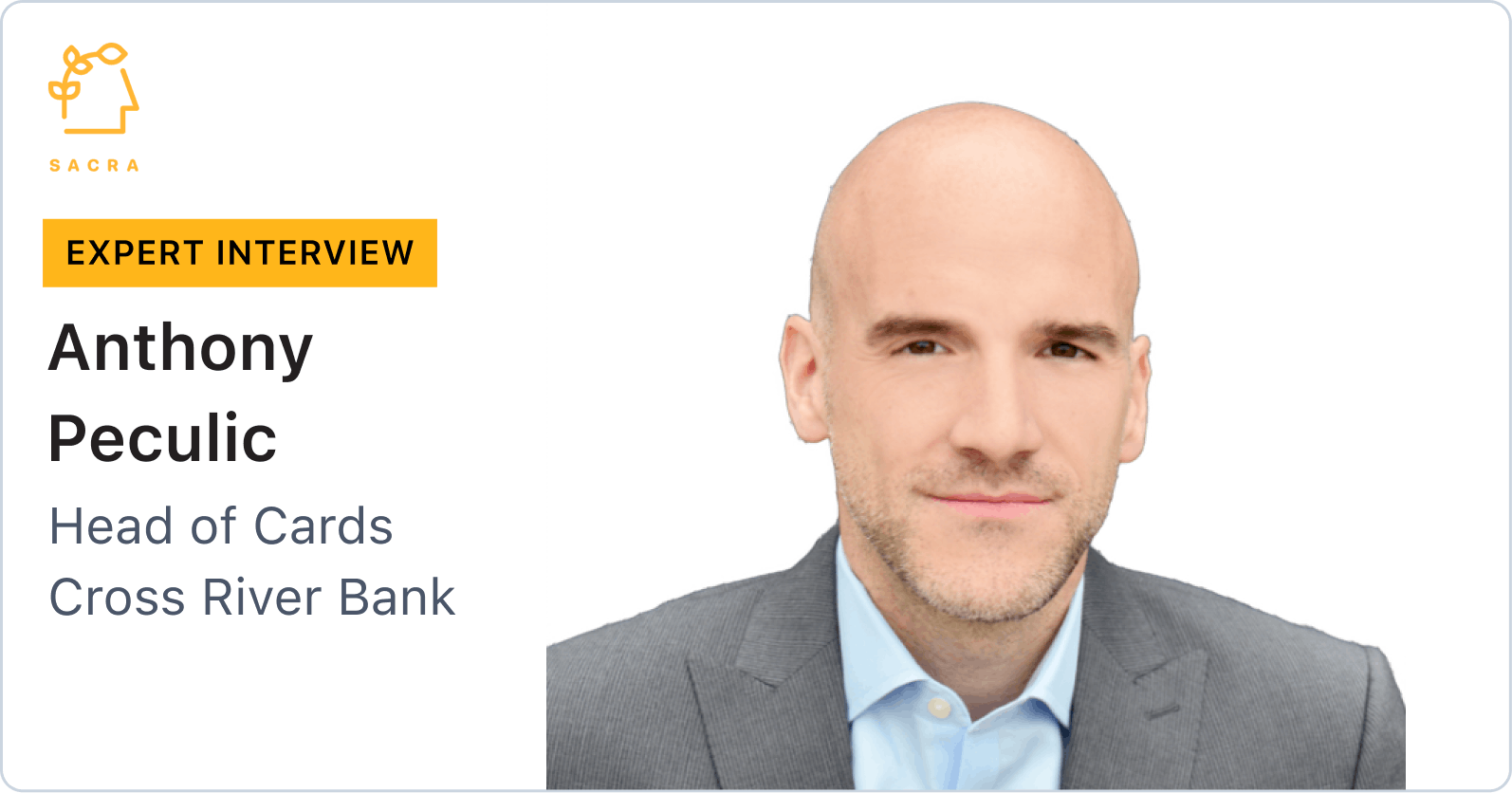Nikil Konduru, GTM Strategy at Lithic, on the future of card issuing
 Jan-Erik Asplund
Jan-Erik Asplund

Background
Nikil Konduru runs GTM Strategy at Lithic and was previously an investor with Nyca Partners. We talked to Nikil about Lithic's approach to partnering with embedded fintech and banking-as-a-service companies, how he think about the future of issuer processors, and the next 5-10 years for fintech.
Questions
- What do you think is the biggest misnomer around this space and BaaS issuer processors in general?
- If you look at a 5 or 10-year time span, do you see a potential for many kinds of winners in terms of the different parts of the value chain they occupy? Why might certain BaaS providers be in a better position to have a market consolidate around them?
- One idea we've come across is that there's a "portfolio approach" to customers, like Square and Instacart for Marqeta. Since you have experience as a VC, I'm curious what similarities you see between being in venture capital and working at a place like Lithic. Do you have best practices for winning over or finding those high potential customers to build on top of Lithic, or do you think about that at all?
- Fintechs and embedded finance companies can use an all-in-one BaaS to spin up financial services, or they can piece together what they need using point solutions. What kind of customers do the best with point solutions and what customers do the best with an all-in-one BaaS?
- We heard something similar from the CEO of Sila about it really coming down to finding a best-in-class solution versus an all-in-one platform. Do you also see best-in-class point solutions making more sense in this context?
- Every post-Marqeta BaaS and issuer processor claims to be developer-first and developer friendly. What does that mean to Lithic and how does Lithic differentiate among the new breed of developer/API-first products?
- Lithic seems to take a low-touch, self-serve approach for developers. How do you think about balancing the trade-offs between lower ACV and more sales efficiency?
- I'm curious about team and culture at Lithic. If one of your friends was joining Lithic, what advice would you give them to succeed?
- Are there other ways in which Lithic's origin in Privacy.com influences how Lithic works and how you approach card issuing?
- Is there an operating philosophy that is shared by everyone at Lithic and carried through to the customers and to the product? Amazon, for example, is known to be super customer-centric and obsessed with cost.
- Do you have any thoughts on the policy side around interchange and how changes to the Durbin Amendment might affect the state of play in BaaS?
Interview
What do you think is the biggest misnomer around this space and BaaS issuer processors in general?
I don't know if misnomer is the right word, but there's a lot of conflating of different ideas and different business models. In large part because there's a lot going on in the ecosystem.
A good way of thinking about BaaS is that it's the enabling infrastructure for embedded financial services. Now within BaaS, however, there are a lot of different things going on. There are core banking system providers and core wrappers, there are identity and fraud decisioning vendors, there are loan servicing specialists, there are issuer processors, and of course, there are all-in-one BaaS providers.
The all-in-one BaaS providers are closer to what you might call, ‘general service providers’, which bundle together different services and bank relationships. A lot of them today actually use other issuer processors under the hood such as i2c or Visa DPS. This is the entity that typically sits between the issuing bank and the card networks to manage card issuance and serve as an orchestration layer for authorizations, settlements, and clearing. Treasury Prime for instance partners with Marqeta as the issuer processor; Unit uses Visa DPS. It’s easy to conflate all of these into one bucket and see them all as competitive, but you can already see that there's a lot of nuance.
As you go farther and farther down the infrastructure layers to get close to the metal, you’ll see that there’s a very limited set of modern card issuing processors. This is where Lithic is innovating. We're building powerful card issuing primitives for others across the ecosystem to leverage.
If you look at a 5 or 10-year time span, do you see a potential for many kinds of winners in terms of the different parts of the value chain they occupy? Why might certain BaaS providers be in a better position to have a market consolidate around them?
I don't think that this is going to be a "winner take all" or even a "winner take most" market. I think there's a lot of opportunity and a lot of room for specialization. Within BaaS, there might be some parts of the value stack such as transaction monitoring, fraud prevention, and issuer processing, which benefit from obvious scale economies (investing in tiny optimizations, which can be amortized over millions of transactions). Others, such as general service providers, could differentiate based on deep vertical focus, or by uniquely bundling services. It’s still the first innings for embedded financial services. It's going to be a multi-trillion dollar opportunity over the next few decades, and if each player gets even a little bit of share, that's more than enough room to build giant businesses.
One idea we've come across is that there's a "portfolio approach" to customers, like Square and Instacart for Marqeta. Since you have experience as a VC, I'm curious what similarities you see between being in venture capital and working at a place like Lithic. Do you have best practices for winning over or finding those high potential customers to build on top of Lithic, or do you think about that at all?
One of the best things about this job is getting to interact with exceptional founders. I have conversations every week with folks that are building incredibly creative, incredibly disruptive businesses. Many of these I’m confident can become giant businesses, even the ones building in what you might otherwise think of as niche markets. We have an idea of the serviceable addressable market sizes across different industries but there’s always room for surprises to the upside as we’ve learned and re-learned about fintech and vertical SaaS in equal measures this last decade. As a result, at Lithic, we’re heads down focused on building the most flexible card issuing tools that customers can leverage for any number of novel use cases.
Sacra highlight
Just look at what Affirm, Klarna, Afterpay and the other BNPL players have managed to accomplish in such a short period. A decade ago, could any of us have really called this dramatic rise of BNPL? There’s a segment that’s powering billions of dollars in volume over the network rails, and it wasn’t even on anyone’s radar a decade ago. We’re going to see several more breakout segments like this in the next decade. And they’re all going to feel obvious only in retrospect.
Fintechs and embedded finance companies can use an all-in-one BaaS to spin up financial services, or they can piece together what they need using point solutions. What kind of customers do the best with point solutions and what customers do the best with an all-in-one BaaS?
I think the most fruitful framing exercise we conduct at Lithic is thinking about the JTBD for each prospect that comes in through the door.
Card issuing solves a payments need, and the need for secure, seamless payments is ubiquitous, but that doesn’t mean that one size fits all. And so the Growth team at Lithic spends a disproportionate amount of time understanding the actual card issuing use case for each client in order to serve them best. You might find for instance that one client has a very straightforward disbursement use case. They want to create virtual gift cards with pre-set spending limits and distribute them out to survey respondents as a thank you. You might have another client that’s building a corporate card solution for DAOs and wants to help these end users generate double or even triple-digit DeFi yields on their treasury assets.
For that former use case, we think that Lithic’s out-of-the-box Starter solution could work great – folks could start issuing cards straight away without signing contracts or even talking to the Sales team. For that latter use case however, we think that the client is probably best served by working with an API-first, crypto wallet and compliance provider such as Wyre who can handle the real-time liquidity between fiat and crypto.
No single BaaS solution is going to provide the best crypto on-ramp as well as the best Identity and fraud decisioning as well as the best issuer-processing. That’s why, at Lithic, we're building developer-first, composable, card issuing primitives. So that startups can mix and match the best fintech infrastructure available in the market to build unique, differentiated products.
Each of these point solutions is singularly focused on building the most powerful tools to solve a precise pain point; as a result, these best of breed solutions stand to benefit from compounding loops. Working with point solutions also affords greater flexibility as a company’s product roadmap evolves over time. Instead of being beholden to an all-in-one platform that has different priorities on its own product roadmap, companies can easily plug in a modular solution to solve for specific functionality as needed. With so many great API-first solutions out there, we’re quickly converging upon a request/response world.
We heard something similar from the CEO of Sila about it really coming down to finding a best-in-class solution versus an all-in-one platform. Do you also see best-in-class point solutions making more sense in this context?
Yeah, that's right. We love Shamir and the Sila team and work with them to support a number of joint customers. Sila does an excellent job at ledgering and at ACH money movement.
We recently announced our Integration Partner Program at Lithic, where we work with the best fintech infrastructure providers out there to build joint solutions for our customers. Sila, Canopy, and Wyre were our first partners. Just this month we announced that Dwolla and Peach had also joined the integration program. I’ll add that it's very easy to say, "Hey, we have a partnership with so and so and we have a neat referral agreement." But we’ve gone much further than that: We're providing technical integration guides for our joint customers, we're mapping end to end funds flows, and we’re allocating engineering resources to removing frictions in these joint implementations. Our philosophy is that the future of fintech infrastructure is in modular, interoperable APIs. In the purest sense, we're looking to partner with fintech infrastructure that can augment our clients' value propositions or accelerate their speed to market. If there's something that those providers do best, better than anyone else, we want to partner with them so that our clients can reap maximum benefit.
Every post-Marqeta BaaS and issuer processor claims to be developer-first and developer friendly. What does that mean to Lithic and how does Lithic differentiate among the new breed of developer/API-first products?
I could say a number of things here. That being developer-first to us means having an easy to use, clear API with no bloat. That our technical teams offer high-touch support to customers of all sizes. And that Lithic’s API is highly unique because it was built with developer-experience in mind from its inception - after all, we were our own first customer (Privacy.com).
But frankly, me saying all of that still shouldn’t convince you. We’d rather put our money where our mouth is. Jeff Lawson, the legend, said it best: “Ask Your Developer”. If your business is exploring card issuing, have your developers check out docs.lithic.com. Hear what they have to say.
Lithic seems to take a low-touch, self-serve approach for developers. How do you think about balancing the trade-offs between lower ACV and more sales efficiency?
We’ve invested a lot of time and resources into building out the self-serve experience for developers. Many of the larger players in our space have been avoiding the long tail by choice because the implementation complexity of their solutions makes whale-hunting the only viable option. Meanwhile, the entire Seed-Series C segment has been overlooked and this has stifled innovation. We think that with our self-serve, developer-friendly tools, we can address that entire audience, and give them access to more powerful tools over time as they grow. We have some transacting customers today that we're confident will grow to the size of a Brex, DoorDash, or Klarna one day.
I'm curious about team and culture at Lithic. If one of your friends was joining Lithic, what advice would you give them to succeed?
In my mind, we probably have one of the friendliest workplace cultures in Fintech right now. Our weekly standup meetings are always a perfect balance of debriefs, memes, and CTAs (with some riffing in the chats). I think it stems from the very top. David, Bo and Jason, who started the company back in 2014, have that rare combination of being face-meltingly smart while also being down-to-earth. It really helps set the culture for the org. We’re all out here doing our best work but not taking ourselves more seriously than needed.
To a friend or new colleague, I’d recommend bringing their whole self to work. We’ve built a pretty great neighborhood around here and you really do get back what you put into it, tenfold.
Are there other ways in which Lithic's origin in Privacy.com influences how Lithic works and how you approach card issuing?
Absolutely. Having grown out of Privacy.com and actually dogfooding our own card issuing infrastructure, Lithic has benefited immensely. Privacy has been around six plus years and has a really rich history. Over that time we've managed to identify, resolve and optimize for thousands of different card issuing edge cases. As a result, the Lithic platform today is battle tested. It's proven itself to be highly scalable and resilient. It’s processed billions of dollars in card payments across millions of cards. Our roots in Privacy.com are what allow us to confidently serve Lithic customers of all sizes today.
Is there an operating philosophy that is shared by everyone at Lithic and carried through to the customers and to the product? Amazon, for example, is known to be super customer-centric and obsessed with cost.
We have some killer guiding company values. My personal favorite of these is ‘Ask why, learn why’ – this is the idea that our impact is greatest when we understand the motivations behind the things that we do, and what’s possible within the industry. Everyone at Lithic is empowered to ask why something is the way that it is and why it couldn’t be done in a different way. We believe these conversations are critical towards developing more innovative, more flexible products for our customers’ diverse use cases. It’s funny you should mention Amazon. We like to apply their one-way vs two-way door framework for decision-making: A two-way door allows you to change course if early signs suggest that you really should’ve gone down another branch of the decision tree. One-way doors however require firm commitments and can’t be walked back. Consequently, one-way door decisions require a lot more time, consideration and Exec. team input whereas with a two-way door, we’re primed to optimize for iteration speed and tight feedback loops. This framework basically serves as a helpful heuristic to identify critical junctures while still keeping us as nimble as possible.
Do you have any thoughts on the policy side around interchange and how changes to the Durbin Amendment might affect the state of play in BaaS?
The U.S. still has one of the most favorable interchange regimes and I don’t think that anyone can reliably say that this is going to change any time soon. Durbin-exempt consumer prepaid/debit interchange is still holding steady at ~140bps. For reference, in Europe you'd get about 20 to 30 basis points for consumer card programs. The situation is a bit better for European card issuers that generate commercial volume. They’d earn closer to 1.50%, give or take. But even then, that’s materially lower than what you’d get in the U.S., at north of 2.50%.
A lot of commentators have hypothesized that this is a risk to the long-term unit economics of the industry, that rates will eventually normalize globally. It’s always a distant possibility, but I don't think we should hold our breaths. I’ve always thought about it as a collective action problem. You have a small set of powerful issuers on one side, you have the two networks in the middle playing arbitrator, and you have millions of merchants on the other side. The issuers want to keep interchange high and are pretty well organized to lobby for their collective interests (they can also shop their volume between the two networks). The millions of merchants would prefer to keep interchange rates low, but each of them individually has only very limited volume, and thus very limited voice.
You still see the giants like Walmart, Costco, Amazon, Facebook, and Google independently negotiating with Visa and MasterCard and working out custom interchange rates. But there's the long tail of millions of merchants that aren't ever going to have the muscle to do the same.
Disclaimers
This transcript is for information purposes only and does not constitute advice of any type or trade recommendation and should not form the basis of any investment decision. Sacra accepts no liability for the transcript or for any errors, omissions or inaccuracies in respect of it. The views of the experts expressed in the transcript are those of the experts and they are not endorsed by, nor do they represent the opinion of Sacra. Sacra reserves all copyright, intellectual property rights in the transcript. Any modification, copying, displaying, distributing, transmitting, publishing, licensing, creating derivative works from, or selling any transcript is strictly prohibited.














